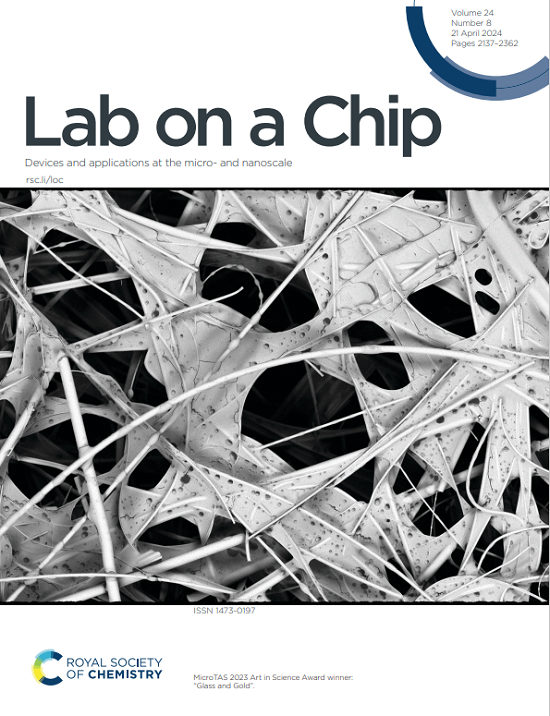一种紧凑的自动磁数字微流体化学发光免疫分析系统,用于快速灵敏地检测蛋白质生物标志物
IF 5.4
2区 工程技术
Q1 BIOCHEMICAL RESEARCH METHODS
引用次数: 0
摘要
快速、灵敏地检测特异性蛋白质生物标志物对于疾病的早期诊断和监测至关重要。磁数字微流控技术(mmdmf)能够集成和小型化化学发光免疫分析法(CLIA),为生物标志物检测提供了高灵活性、高效率和低样品消耗的显著优势。磁珠操作作为MDMF的关键组成部分,对于在短时间内提高检测灵敏度和准确性起着至关重要的作用。在这项研究中,我们提出了一种基于mdmf的自动化CLIA系统,并开发了一种紧凑的分析仪,通过优化的磁珠操作,可以更快、更灵敏地检测生物标志物。该系统采用薄膜夹层微流控芯片,配合特别设计的拼接磁铁,产生更强、更集中的磁力,显著增强了对磁珠运动的控制。通过使用磁铁驱动磁珠穿过油中水滴,系统实现了整个CLIA工作流程的自动化。通过理论分析、仿真和实验,验证了该系统在磁珠聚集和转移方面的优势,经过3轮清洗,磁珠回收率高达97.07%,清洗效果良好。心肌肌钙蛋白I (cTnI)的检测可在10 min内完成,检出限(LOD)为2.09 pg/mL,检测范围为0.01 ~ 20 ng/mL,与常规CLIA具有较强的线性相关性(R²= 0.9961)。该系统实现了快速、灵敏、自动化的CLIA,是一个很有前景的临床诊断平台。本文章由计算机程序翻译,如有差异,请以英文原文为准。
A compact automated magnetic digital microfluidic chemiluminescence immunoassay system for rapid and sensitive detection of protein biomarkers
The rapid and sensitive detection of specific protein biomarkers is essential for early diagnosis and monitoring of diseases. Magnetic digital microfluidics (MDMF), capable of integrating and miniaturizing chemiluminescence immunoassay (CLIA), offers significant advantages for biomarker detection, including high flexibility, high efficiency, and low sample consumption. Magnetic bead manipulation, as a key component of MDMF, plays a critical role in improving detection sensitivity and accuracy within a short analysis time. In this study, we proposed an automated MDMF-based CLIA system and developed a compact analyzer, enabling faster and more sensitive biomarker detection through optimized magnetic bead manipulation. The system employs a film-sandwiched microfluidic chip, along with a specially designed spliced magnet to generate a stronger and more concentrated magnetic force, significantly enhancing the control over the motion of magnetic beads. By using the magnet to drive magnetic beads through water-in-oil droplets, the system automates the entire CLIA workflow. Through theoretical analysis, simulations, and experiments, we validate the system's advantages in magnetic bead aggregation and transfer, achieving a high magnetic bead collection rate of 97.07% with excellent cleaning effect after three cleaning rounds. The detection of cardiac troponin I (cTnI) can be completed within 10 min, with a limit of detection (LOD) of 2.09 pg/mL, a detection range of 0.01 to 20 ng/mL, and a strong linear correlation with conventional CLIA (R² = 0.9961). This system achieves rapid, sensitive, and automated CLIA, making it a promising platform for clinical diagnostics.
求助全文
通过发布文献求助,成功后即可免费获取论文全文。
去求助
来源期刊

Lab on a Chip
工程技术-化学综合
CiteScore
11.10
自引率
8.20%
发文量
434
审稿时长
2.6 months
期刊介绍:
Lab on a Chip is the premiere journal that publishes cutting-edge research in the field of miniaturization. By their very nature, microfluidic/nanofluidic/miniaturized systems are at the intersection of disciplines, spanning fundamental research to high-end application, which is reflected by the broad readership of the journal. Lab on a Chip publishes two types of papers on original research: full-length research papers and communications. Papers should demonstrate innovations, which can come from technical advancements or applications addressing pressing needs in globally important areas. The journal also publishes Comments, Reviews, and Perspectives.
 求助内容:
求助内容: 应助结果提醒方式:
应助结果提醒方式:


